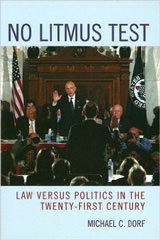It has been difficult to find much to laugh about in the economic news of the last couple of weeks, as President Donald Trump single-handedly caused a generally downward roller-coaster ride for world financial markets, but Elon Musk’s dunking on Trump tariff guru Peter Navarro did provide one bright spot. Musk called Navarro “truly a moron,” “dumber than a sack of bricks,” and used a slur to further insult Navarro’s intelligence. As my frequent co-author and fellow Verdict columnist Neil Buchanan wrote on my blog, Navarro thus “ruin[ed] everyone’s day when the rest of the world had to agree with Elon Musk about something.”
Navarro, for his part, has attributed Musk’s distaste for tariffs to the Tesla CEO’s self-interest, describing the company’s vehicles as “assemble[d]” in the U.S. from parts made in China and elsewhere. But in so saying, Navarro overlooks the fact that it is not just Musk and CEOs of other U.S. companies that rely on imported goods and parts who think tariffs are a bad idea. Navarro is nearly the only economist alive who believes that steep tariffs are good for the U.S. economy. Increasingly, Navarro will come to be an outlier among all human beings (putting aside those most in thrall to Trump’s cult of personality), as we see substantial portions of our retirement savings evaporate and come to experience stagflation—high prices due to tariffs combined with high unemployment due to the recession triggered by the diminution of global trade.
Can anything be said for tariffs? Trump has compared them to “medicine” that is unpleasant to swallow or has some nasty side effects but is good for the patient in the long run. Granted that Trump’s tariffs are way too high and have been rolled out chaotically. Nonetheless, one might think that tariffs on select goods could nurture U.S. domestic industries.
Even before the announcement of Trump’s latest tariffs, Chinese electric car companies like BYD were essentially excluded from the U.S. market, giving Tesla and traditional American car companies like Ford and General Motors the opportunity to establish themselves. The “infant industry” theory according to which tariffs can provide a temporary shield is controversial even on its own terms, but at least it’s not suicidal in the way that the “liberation day” Trump tariffs are.
To be sure, it’s by no means clear that U.S. workers want the kinds of jobs that the Trump administration says it hopes to create. Treasury Secretary Howard Lutnick envisions an “army of millions and millions of people screwing in little, little screws to make iPhones.” To put it mildly, those are not good jobs. At the Foxconn facility in Zhengzhou at which about half of the world’s iPhones are assembled, the working conditions are harsh and the pay averages less than three dollars per hour.
But let us assume for the sake of argument that some combination of tariffs and domestic industrial policy could bring those jobs to the United States. Let us further assume that U.S. workers would be paid better and work under better conditions. And let us assume that U.S. consumers would be willing to pay the resulting higher prices on iPhones and other manufactured goods that result from higher labor costs. Would that medicine work?
The short answer is no. As a recent article in The New York Times explained, the decline in manufacturing jobs in the United States over the last half century has as much to do with automation as it does with competition with cheap labor from China and other parts of the global south.
The Wrong Solution to the Wrong Problem
The trend towards greater productivity through technology is only likely to accelerate with advances in artificial intelligence (AI). The three leading U.S. AI companies are OpenAI (maker of ChatGPT), Anthropic (maker of Claude), and Google (which produces Gemini and now includes an “AI overview” in its web searches). OpenAI CEO Sam Altman, Anthropic CEO Dario Amodei, and Google Director of Engineering (and noted futurist) Ray Kurzweil have all stated that they expect the achievement of artificial general intelligence (AGI) before the end of the current decade. An algorithm capable of AGI has human-like intelligence. The next step beyond AGI would be artificial superhuman intelligence (ASI). Many experts believe ASI would follow rapidly after AGI.
AGI and ASI hold great promise—from the discovery of new treatments for diseases to previously unavailable technological breakthroughs in space travel, climate, and more. They also pose substantial risks. All AI currently consumes large quantities of energy and water (for cooling), so for at least the near term, it will exacerbate environmental damage. Many people worry that humans will lose control of AI, which will then treat us badly, as in much science fiction. Whatever the likelihood of such scenarios, it is nearly certain that AI advances will eliminate the need for humans to do many of the jobs they currently perform.
In the past, technological advances that destroyed old jobs usually created new ones. For example, the invention of the automobile eliminated the need for all but a handful of farriers to shoe horses but resulted in new jobs for auto mechanics. There is no guarantee, however, that this trend will continue—especially if any newly created jobs can be performed by AGI or ASI-capable machines.
To be sure, we do not face the imminent displacement of all human workers. Even a superintelligent chatbot cannot manipulate a tiny screw.
However, that could change quickly. Humanoid robots in development perform impressive feats, with some possessing fine motor skills. Meanwhile, currently commercially available chatbots are already affecting the market for software engineers and, upon the arrival of AGI, could replace accountants, lawyers, psychologists, and even Verdict columnists.
It is possible that, as in the past, new opportunities created by the new technologies will shift rather than eliminate demand for human workers. But it is also possible that we are on the verge of eliminating most employment opportunities for humans. A prudent president and Congress would make managing the coming transition a top priority.
Unfortunately, the U.S. currently has its most imprudent president in history backed by a pliant and cowering Congress. To make matters worse, in addition to his impetuousness and misplaced faith in tariffs as a panacea, President Trump is a luddite. Reportedly, during his first presidential administration, he did not use a computer and dictated his social media posts. There is no evidence that Trump has become more tech-savvy since then. Despite ceding an enormous amount of power to Elon Musk, Trump was so unfamiliar with Tesla EVs that, upon sitting in one during a recent White House lawn infomercial for Tesla, Trump exclaimed that “everything’s computer.”
Put simply, there is a good chance that the world economy will confront radical technological changes due to AGI during the term of a president who has no understanding of existing modern technology, much less what is on the horizon. At the precise moment when we need steady leadership to smooth the transition to the technology that will define the remaining three quarters of the twenty-first century, the U.S. is under the thumb of a man who romanticizes the nineteenth century economy based on a view of global markets that had already been debunked in the eighteenth century.











